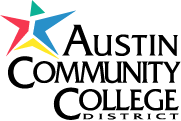
Community College Daily: BY ELLIE ASHFORD JUNE 12, 2019
A student coaching initiative at Austin Community College (ACC) in Texas, launched in conjunction with the implementation of guided pathways, has led to solid gains in student success.
An analysis conducted by ACC of the multi-year Guided Pathways Advising through Coaching initiative found a 15.5 percentage point increase in overall retention from one term to the next.
Under the new advising model, the college moved away from traditional, passive academic advising toward a more developmental coaching approach. Advisers proactively work with students on a range of issues, including their financial situation, personal wellness, time-management skills and career readiness.
ACC partnered with student success experts from the InsideTrack education management company to develop a comprehensive student coaching methodology tailored to ACC students, train advising staff, and develop ongoing professional develop and quality assurance programs.
Over the last two years, ACC increased the number of advisers from 40 to 65, began assigning an adviser to every student, stepped up professional development for advisers and increased their pay, says ACC Interim Vice President Guillermo Martinez III.
The college also enhanced academic support and expanded the safety net for students facing financial, housing and food insecurity. This additional support has proven crucial, as half the students at ACC are supporting families and more than a one-third struggle with food insecurity.
Retention rates improve
Overall, Martinez says, the term-to-term retention rate for Hispanic students increased by 16 percent, which is especially promising as 37 percent of ACC’s student body is Hispanic. Term-to-term retention rates also increased 18 percent for black students, 18 percent for part-time students, and 16 percent for male students.
The biggest retention gains – 24 percent – were for distance learning students, Martinez says. Those students are difficult to engage, as they don’t spend much time on campus, and advisers had to make a special effort to reach them on the phone or through online means such as Google Hangout.
“The improvements we’ve seen in student outcomes are a powerful testament to the importance of supporting our students in ways that enable them to thrive in the classroom and as parents, professionals and community members,” says ACC President Richard Rhodes.
The pathways context
The enhancements in advising were carried in the context of ACC’s adoption of a guided pathways model and other reforms. Beginning in 2016, ACC restructured its academic system by grouping hundreds of different program options into 10 areas of study, such as business and health sciences, according to the college’s 2018 Student Success report.
A program map created for each credit program within a pathway lists the required courses in sequential order for each degree and certificate.
To promote persistence, ACC established student success courses, and in 2018 launched a co-requisite model for developmental math, reading and writing, created two “Z-degrees,” with zero textbook costs and adopted a holistic advising system.
Students are assigned an “area of study” adviser based on their campus. These advisers work with up to 150 students who are in college for the first time, providing personalized email “nudges” six times a semester with guidance on concrete steps they should take to increase their academic success.
The advisers use case management software to monitor student progress, track communication and persistence propensity scores to provide intentional coaching and coordinate referrals for additional support services.
Tags: Academic Support, coaching initiative, Community College Daily, guided pathways, guided pathways advising, Hispanic, InsideTrack education, retention
Back to Top
